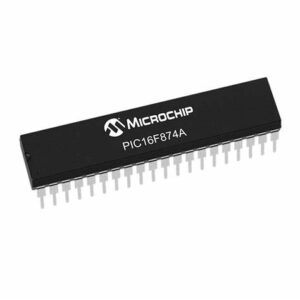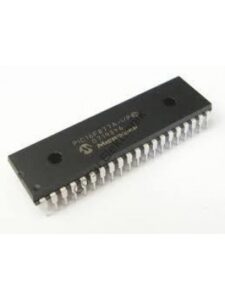Read Microcontroller PIC16LF874A Heximal from its flash memory, break MCU fuse bit and restore microchip processor pic16lf874a flash memory program;

The Oscillator Start-up Timer (OST) provides 1024 oscillator cycles (from OSC1 input) delay after the PWRT delay is over (if enabled). This helps to ensure that the crystal oscillator or resonator has started and stabilized.
The OST time-out is invoked only for XT, LP and HS modes and only on Power-on Reset, or wake-up from SLEEP. The configuration bit, BODEN, can enable or disable the Brown-out Reset circuit.
If VDD falls below VBOR (parameter D005, about 4V) for longer than TBOR (parameter #35, about 100 µS), the brown-out situation will reset the device.
If VDD falls below VBOR for less than TBOR, a RESET may not occur. Once the brown-out occurs, the device will remain in Brown-out Reset until VDD rises above VBOR after Read Microcontroller heximal.
The Power-up Timer then keeps the device in RESET for TPWRT (parameter #33, about 72 mS). If VDD should fall below VBOR during TPWRT, the Brown-out Reset process will restart when VDD rises above VBOR, with the Power-up Timer Reset.

The Power-up Timer is always enabled when the Brown-out Reset circuit is enabled, regardless of the state of the PWRT configuration bit. On power-up, the time-out sequence is as follows: the PWRT delay starts (if enabled) when a POR Reset occurs.
Then, OST starts counting 1024 oscillator cycles when PWRT ends (LP, XT, HS). When the OST ends, the device comes out of RESET. If MCLR is kept low long enough, all delays will expire.
Bringing MCLR high will begin execution immediately. This is useful for testing purposes or to synchronize more than one PIC16F7X device operating in parallel. Table 12-5 shows the RESET conditions for the STATUS, PCON and PC registers, while Table 12-6 shows the RESET conditions for all the register.

